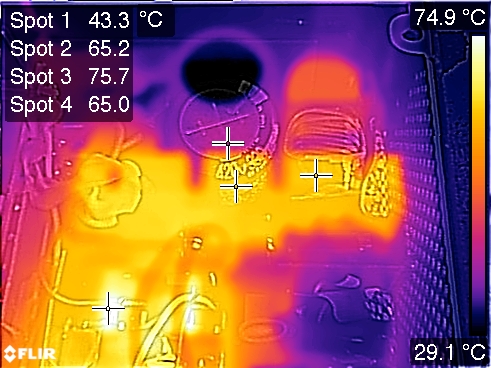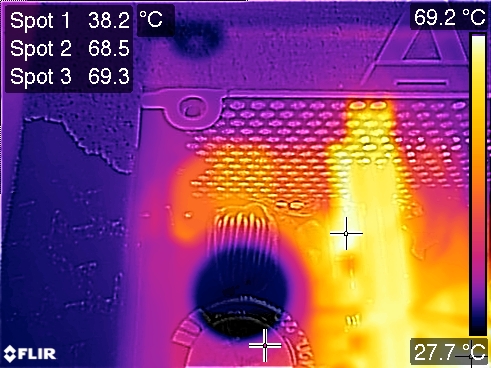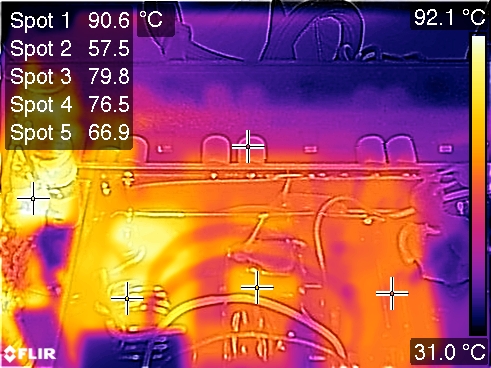EVGA SuperNOVA 650 GM PSU Review: Big Power In A Small Form Factor
Why you can trust Tom's Hardware
Cross-Load Tests and Infrared Images
Our cross-load tests are described in detail here.
To generate the following charts, we set our loaders to auto mode through our custom-made software before trying more than 25,000 possible load combinations with the +12V, 5V, and 3.3V rails. The load regulation deviations in each of the charts below are calculated by taking the nominal values of the rails (12V, 5V, and 3.3V) as point zero. The ambient temperature is between at 30°C (86°F) to 32°C (89.6°F).
Load Regulation Charts



Efficiency Chart
There's a small region where the efficiency lands between 92 and 94%. For a much larger part of the chart, it falls between 90 and 92%. For the most part, FSP's ACRF topology provides high efficiency levels without the extra components needed by half- and full-bridge topologies.
Ripple Charts




Infrared Images
We apply half-load for 10 minutes with the PSU's top cover and cooling fan removed before taking photos with our modified FLIR E4 camera that delivers 320x240 IR resolution (76,800 pixels).







The daughterboard hosting the minor rails' DC-DC converters gets quite hot. After all, we're pushing the 5V and 3.3V rails with 12A of load each. Other areas demonstrate low enough temperatures thanks to a highly efficient platform.
MORE: Best Power Supplies
MORE: How We Test Power Supplies
Get Tom's Hardware's best news and in-depth reviews, straight to your inbox.
MORE: All Power Supply Content
Current page: Cross-Load Tests and Infrared Images
Prev Page Protection Features and DC Power Sequencing Next Page Transient Response Tests
Aris Mpitziopoulos is a contributing editor at Tom's Hardware, covering PSUs.
